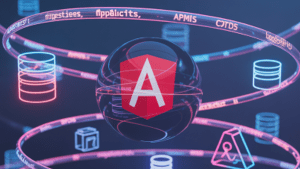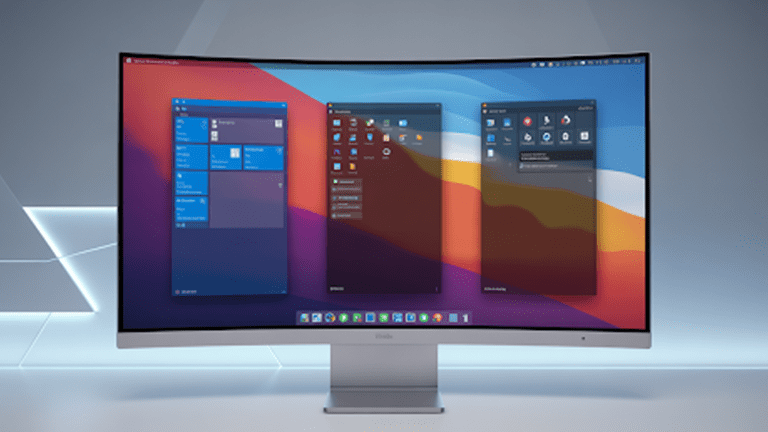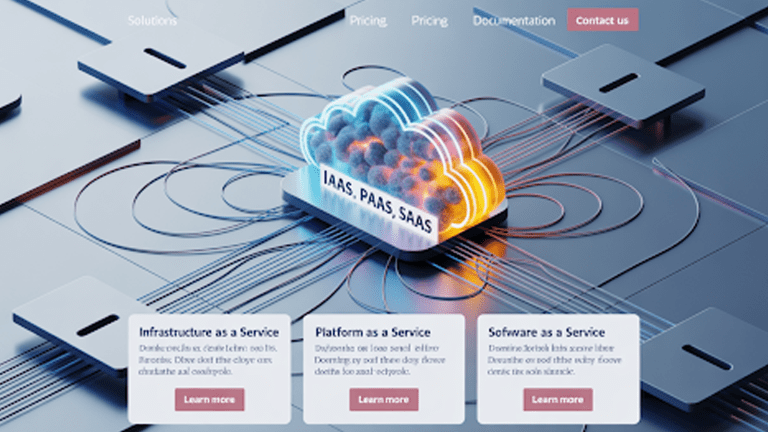Node, .NET, and PHP solve many critical challenges in Angular applications. They keep data persistent even after page reloads and manage authentication and user permissions securely on the server. This protects sensitive information from exposure on the frontend.
On paper, these backends match perfectly with Angular. In practice, developers often deal with complex steps when connecting APIs, managing asynchronous operations, and keeping a clear separation between frontend and backend logic.
In this guide, we will explain how to integrate Node.js, .NET, or PHP with Angular. And if you’d rather skip the technical maze, Pure Website Design, a trusted Angular development company, can set up the right backend for your business and make sure your application operates without issues.
How to Integrate Node, .NET, and PHP with Angular
With Node, .NET, and PHP, you can create powerful, full-stack applications. Each backend technology can serve APIs that your Angular frontend consumes for dynamic, real-time features.
Step 1: Set up the Angular Project
npm install -g @angular/cli
ng new my-app
cd my-app
ng serve
Step 2: Integrate Node.js (Express API)
Create a simple Node.js backend with Express:
mkdir node-api
cd node-api
npm init -y
npm install express cors
// server.js
const express = require(‘express’);
const cors = require(‘cors’);
const app = express();
app.use(cors());
app.get(‘/api/message’, (req, res) => {
res.json({ message: ‘Hello from Node.js API’ });
});
app.listen(3000, () => console.log(‘Node API running on port 3000’));
In Angular, call the Node API:
// app.component.ts
import { HttpClient } from ‘@angular/common/http’;
import { Component } from ‘@angular/core’;
@Component({
selector: ‘app-root’,
template: `<h1>{{ message }}</h1>`
})
export class AppComponent {
message = ”;
constructor(private http: HttpClient) {
this.http.get<any>(‘http://localhost:3000/api/message’)
.subscribe(data => this.message = data.message);
}
}
Step 3: Integrate .NET (ASP.NET Core API)
Create an ASP.NET Core Web API project:
dotnet new webapi -n DotNetApi
cd DotNetApi
dotnet run
Controller Example:
[ApiController]
[Route(“api/[controller]”)]
public class MessageController : ControllerBase
{
[HttpGet]
public IActionResult Get()
{
return Ok(new { message = “Hello from .NET API” });
}
}
Call this API in Angular by changing the API URL in your HttpClient request.
Step 4: Integrate PHP (Laravel API Example)
composer create-project laravel/laravel php-api
cd php-api
php artisan serve
Route in routes/api.php:
Route::get(‘/message’, function () {
return [‘message’ => ‘Hello from PHP API’];
});
Call Laravel API from Angular the same way by updating the URL.
Step 5: Combine Multiple APIs
You can create a service layer in Angular to call each API separately:
getNodeMessage() { return this.http.get(‘http://localhost:3000/api/message’); }
getDotNetMessage() { return this.http.get(‘https://localhost:5001/api/message’); }
getPhpMessage() { return this.http.get(‘http://localhost:8000/api/message’); }
Expert Suggestion! A professional approach to connecting Angular with different backend technologies requires a clear structure, consistent API design, and optimized code.

At Pure Website Design, we specialize in delivering seamless Angular integration with any backend. Our team ensures your code is secure, scalable, and SEO-friendly, giving your project a competitive edge without the technical headaches.
Tell Us What You Need – Start Your Journey Today!
Share your project requirements, and we’ll guide you through a seamless development journey to bring your ideas to life.
Quick Comparison Between Node, .NET, and PHP
Each backend technology offers unique strengths, development workflows, and performance capabilities. Choosing the right one for your Angular project depends on your goals, team expertise, and scalability needs.
| Feature / Factor | Node.js | .NET | PHP |
| Primary Language | JavaScript (runs on V8 engine) | C# (compiled, runs on .NET runtime) | PHP (interpreted language) |
| Best For | Real-time apps, streaming services, APIs | Enterprise-level apps, high-security systems | Content-driven websites, CMS platforms like WordPress |
| Performance | Excellent for I/O-heavy tasks, event-driven architecture | High performance for CPU-intensive applications | Good for small to medium workloads, less optimal for heavy concurrency |
| Scalability | Very scalable using microservices | Scales well with enterprise infrastructure | Moderate scalability; needs more optimization for large-scale apps |
| Ecosystem | Large npm package repository | Rich enterprise tools, strong Microsoft support | Mature ecosystem, massive community |
| Learning Curve | Easy for JS developers | Steeper, especially for non-Microsoft stack developers | Relatively easy to learn and implement |
| Hosting & Deployment | Flexible; works with many cloud providers | Best with Azure, but supports other cloud environments | Widely supported on most hosting providers |
| Integration with Angular | Seamless via REST APIs or GraphQL | Smooth integration with APIs and Microsoft stack | Works well with APIs, especially for CMS-driven sites |
Choosing the right backend depends on your project’s complexity, performance requirements, and team expertise. There is no one size fits all answer, but it’s important to ensure your application remains fast, secure, and mobile friendly.
Which Is Best for You: Node, .NET, or PHP – Expert Advice
We’ve built everything from small portfolio sites to massive enterprise platforms, and one thing’s for sure, choosing the right backend can make or break your project.

Every technology has its own sweet spot, and knowing where each one shines will save you headaches (and money) down the road.
Let’s break down Node, .NET, and PHP so you know exactly which one’s going to work best for your needs.
Node.js
When we need speed and scalability, Node.js is often our first choice. It runs on JavaScript, which means your frontend and backend can share the same language. It is super handy for full-stack projects.
The event-driven, non-blocking architecture makes it great for handling thousands of simultaneous requests without slowing down.
Best for: Real-time applications like chat apps, streaming platforms, live dashboards, and high-traffic APIs.
Pros:
- Lightning-fast performance for I/O-heavy apps.
- Same language (JavaScript) on both frontend and backend.
- Huge library ecosystem with npm.
Cons:
- Not ideal for CPU-heavy operations.
- Can get messy if code isn’t well structured.
- Requires careful handling of async logic to avoid bugs.
.NET
If we’re working with enterprise-grade systems or need bulletproof security, .NET is often the winner. Backed by Microsoft, it’s stable, high-performing, and supports multiple languages like C#, F#, and VB.NET. With ASP.NET Core, it’s also surprisingly fast and cross-platform now.
Best for: Large-scale enterprise applications, fintech platforms, and projects needing long-term maintenance with strict performance and security requirements.
Pros:
- Exceptional performance for complex, data-heavy applications.
- Strong security features and enterprise support.
- Cross-platform with .NET Core, not limited to Windows anymore.
Cons:
- Steeper learning curve compared to PHP.
- Smaller open-source community than Node or PHP.
- Licensing and hosting can be pricier.
PHP
When speed to market matters and budget is tight, PHP is still a go-to. It powers giants like WordPress, Facebook (in its early days), and Laravel-based apps. It’s easy to set up, works well with almost any hosting provider, and has frameworks that make development lightning quick.
Best for: Content-heavy websites, eCommerce stores, blogs, and small to mid-sized business sites that need quick launch and easy maintenance.
Pros:
- Huge community and easy to find developers.
- Affordable hosting and setup.
- Mature frameworks like Laravel and Symfony for faster development.
Cons:
- Slower performance for highly complex, real-time apps.
- Can encourage poor coding habits if not careful.
- Not as trendy for cutting-edge web apps.
Our Verdict
After years of building websites for different industries, we have learned there is no one size fits all language. It is all about matching the right technology to your goals and making sure the right team builds it.
- Node.js is best for real time high speed apps
- .NET is best for enterprise grade secure systems.
- PHP is best for flexible content driven sites
If you are serious about results partner with Pure Website Design the right Angular development agency to turn your vision into a flawless future proof site
Tell Us What You Need – Start Your Journey Today!
Share your project requirements, and we’ll guide you through a seamless development journey to bring your ideas to life.
Common Pitfalls to Avoid When Choosing Between Node, .NET, and PHP
Picking the wrong tech stack isn’t just a “meh, we’ll fix it later” kind of mistake. It’s the kind that can snowball into budget blowouts, missed deadlines, and a frustrated dev team that suddenly hates their jobs.

So, before you commit to Node, .NET, or PHP, keep these landmines in mind:
1. Choosing Based on Hype Instead of Needs
We’ve all seen it, a business chooses Node just because “everyone’s using it right now,” or PHP because it’s been around forever, without checking if it actually fits the project. Trend-driven decisions often end in costly rewrites.
2. Ignoring Team Expertise
Your tech stack is only as good as the people building it. If your team has years of .NET experience, forcing them to code in Node will slow things down (and spark a mini-mutiny). Match the tech to the skills you already have.
3. Overlooking Long-Term Maintenance
That “quick to launch” choice might turn into a nightmare when you’re three years in and struggling to find developers who still work with your chosen stack. Always think about how easy it’ll be to hire for and maintain in the future.
4. Forgetting About Hosting and Infrastructure Costs
Node might need more server resources. .NET could tie you to specific Microsoft hosting environments. PHP is cheap to host but might need performance tweaks for big traffic.
5. Not Considering Scalability Early On
If your goal is to scale to millions of users, your decision today could either make that a smooth ride or a “why is the server on fire?” kind of day. Plan for growth from the start.
By steering clear of these pitfalls, you give yourself the best shot at picking between Node, .NET, and PHP for the right reasons.
The goal is to choose a platform that supports your long term goals. That might mean handling millions of users, powering eCommerce, or working with a headless CMS integration for future proof flexibility. It is about avoiding quick fixes and shiny new trends.
FAQs
What should I consider before choosing between Node, .NET, and PHP?
The first step is knowing the scale, budget, and complexity of your project. You also need to think about future integrations, like working with a headless CMS, and your team’s technical strengths. This helps you avoid costly rebuilds later.
How can you tell if Node, .NET, or PHP is best for my website?
The right fit comes from matching the platform’s strengths to your website goals. You can look at performance needs, security expectations, and integration possibilities. Pure Website Design can handle this evaluation for you and recommend the best option for long term growth.
Why do you need to think about scalability when picking a backend technology?
Scalability matters because it decides how well your website will handle growth. If the technology struggles under higher traffic, it can cause downtime and lost users. Planning for this early saves money and headaches later.
What happens if you choose a backend based only on trends?
You risk ending up with a technology that does not fit your real needs. This can lead to performance issues, compatibility problems, or costly migrations. It is always better to focus on strategic fit over hype.
How can you make sure the backend works well with a headless CMS?
The easiest way is to select a platform that supports API driven development. This allows your backend to work seamlessly with any headless CMS now and in the future. Checking this early prevents expensive changes later.
Why would you hire experts instead of deciding on Node, .NET, or PHP yourself
Because experts bring experience with different project sizes, industries, and integration needs. This knowledge speeds up decision making and reduces mistakes. Pure Website Design offers this expertise so you get a backend that is right the first time.
What if you want to switch from one backend to another later
Switching is possible, but it is often complex and expensive. Data migration, rewriting code, and adjusting integrations all take time. That is why picking the right backend from the start is important.
How do you make sure your backend supports eCommerce growth
You need a technology that handles large product catalogs, secure transactions, and peak traffic during sales. Integrations with payment gateways and inventory systems are also key for smooth operations.
What is the best way to future proof your backend choice
Choose a technology that can scale, integrate with modern tools like headless CMS platforms, and adapt to new trends. This way your site can grow without major rebuilds. Long term planning beats short term fixes every time.
Conclusion
Node, .NET, and PHP each serve a different purpose. Node gives fast performance for real-time apps. .NET offers enterprise-level security and strong architecture. PHP delivers a quick setup with a vast support network.
Your choice depends on project size, complexity, and growth plans. Match the tool to your goals. Align the tech with long-term vision. A wrong choice slows progress.
The right one speeds results. Pure Website Design helps select the right path and builds solutions that deliver lasting value.




